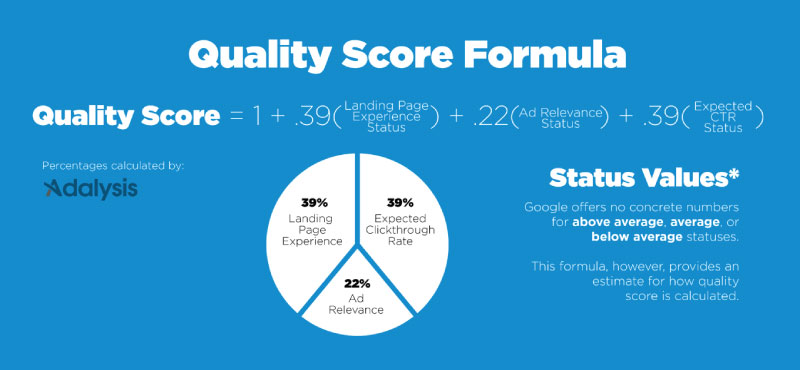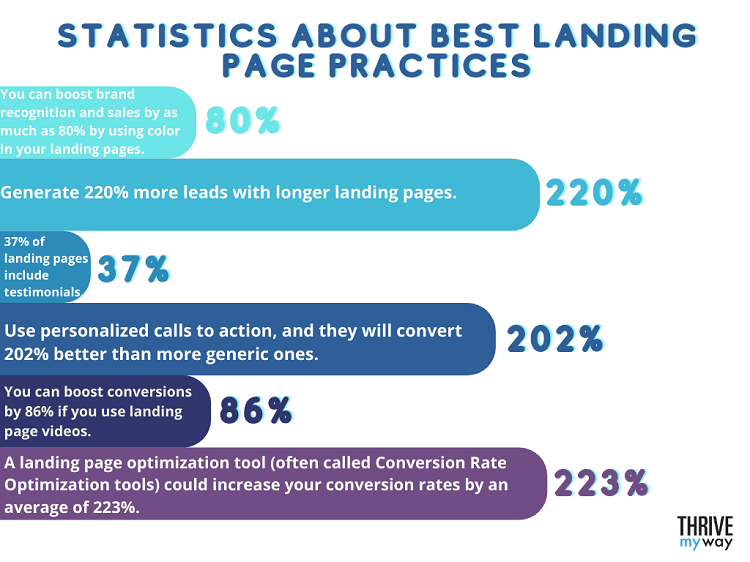Solving the Google Ads Quality Score Puzzle for Higher Rankings

While spending money on Google Ads, you will likely aim for the number one spot on the search results. However, problems like a lack of keyword research or irrelevant keywords can hamper the ad campaign rankings.
As cost per click (CPC) and customer acquisition expenses keep increasing, ad campaigns can become expensive, too. In this case, a framework to assess the ads to improve ROI and visibility.
The Google Ads Quality Score can be the ultimate solution to all these problems. It's a score out of 10; the higher the score, the lower the CPC. The score also tells how relevant and valuable the ad campaign is for the users.
Let’s go deeper into the details of Google Ads Quality Score and its impact on ad ranking.
What is Google Ads Quality Score?

The Google Ad Quality Score is between 1 and 10, where the analysis is done at the keyword level. It determines the quality of an ad campaign as compared to the competitors.
If the score is close to 10, it means that the ad and associated landing page are beneficial for users. This score also tells you how relevant your ad is for anyone searching for the keyword.
Three components used for calculating the score are –
Expected Click-Through Rate (CTR)
This is the measure of the possibility that prospects will click your ad. Average, Above Average, and Below Average are the ways to categorise ads here. While determining this score, Google also incorporates past click-through rates of ads with similar keywords.
Ad Relevance
It determines how accurately or closely the ad matches the user's search intent. If the ad is irrelevant to the keyword or is too generic, it might receive a Below Average score.
Otherwise, if the ad matches an ad group's keywords, it can get an Above-average score.
Landing Page Experience
This score evaluates the relevance between your landing page and the ad after a user clicks on it. So, the web page must offer the services highlighted in the ad.
Clickbait content and slow loading speed will increase the bounce rate. This can significantly affect the landing page experience.
What Is The Quality Score Calculation Formula?
After determining the above metrics, use the following formula to find an ad's Quality Score.
Quality Score = 1+ Landing Page Experience Weight + Ad Relevance Weight + CTR Weight
To receive excellent conversion rates, page traffic and CTR, keep the score between 8 and 10. Even if the keywords have low search intent, the score must be around 7.
How Does Google Ads Quality Score Impact Ad Rankings?
Google constantly strives to offer valuable and actionable search results to users. The same applies to Google ads. When a user searches for a keyword, your ad must show up if it's relevant, increasing its quality score.
So, by creating the appropriate ad, you're offering valuable solutions to prospects. As a result, it improves the rankings of the ad.
The ad positioning or rank will depend on your bidding amount and the quality score. The quality score can improve your ranking even if the bid is slightly low. It enables you to complete successfully with other ads under a budget.
Delving into Google Ad Quality Scores: 5 Winning Tactics to Level Up Your Ad Game
Google reaches over 90% of global internet users, around 5 billion people! Only amazingly crafted ads can use this visibility and send more prospects to the products or services.
In-depth keyword research, compelling ad copy, and brand consistency are some steps to boost Google Ad Quality scores. Let's dive deep into these various tactics.
1. Maintain Brand Consistency across Ad Copies, Landing Pages and Keywords

Brands must ensure the ads, landing pages, and keywords are consistent. Each of these touchpoints must offer the same marketing message. So, if the brand's target keyword is men's grooming products, the ad and landing page must show a similar offering.
Picture this – a user is searching for men's grooming products. They come across an ad with the keywords "best men's grooming products." They click on the site and find a grooming parlour or a gentlemen's salon that helps groom men.
This will naturally annoy users, and they will bounce off the site, planning never to return. Prospects feel cheated here because there's no consistency between the ad and the webpage.
Hence, if the brand has a salon selling grooming products, they can tweak the ads to fetch users. Other tactics to boost quality scores through brand consistency are –
-
Include the ad keywords naturally in the landing page content
-
Modify page title to include primary keywords
-
For each ad group you're bidding on, use the exact keywords in web pages and ads
Conduct a consistency check through the Google Ads Manager account to offer a great user experience. If you're implementing Google Ads YouTube, keep them consistent as well.
2. Improve Landing Page Design and Keyword Arrangement

Marketers may often forget about the landing page design while working with Google Ad Manager to improve ads. Directing users to an informative, structured, fast-loading, and visually appealing site is essential. That'll reduce bounce rates and boost organic traffic from ads.
Start creating landing pages for every ad group and insert the relevant URLs. For example, if the user wants pricing information, ensure the ad sends them to the pricing page. If the user lands on the homepage via the ad, they may leave soon.
Also, design the site with appealing imagery, graphics and a smooth user interface. Ensure the product/service information is easy to find and the site is responsive. This will indicate the website is relevant and reduce bounce rates. It will, in turn, increase the Quality Score.
Integrate the primary/ad keywords organically across the pages. Add them to the meta description, title, subheads and image alt texts.
3. Conduct a Comprehensive Keyword Research

When running single or various types of Google ads, keyword research is a fundamental step for their success. Firstly, find keywords most relevant to the ad and its associated search intent. Prioritise these high-intent keywords and identify branded, long-tail and competitor keywords.
Next, expand your keywords using short phrases to match user intent.
-
If the targeted keyword is "roofing", expand it to "roofing contractors" or "roofing contractor services".
-
You can try to make the keywords more descriptive, like "professional roofing services" or "experienced roofing contractors".
It's a great strategy to group keywords according to different themes during research. Divide them into smaller groups to craft ad copies and landing pages for each. For example, "waterproofing solutions" can be subdivided into "private waterproofing" and "commercial waterproofing".
In addition, make sure that you regularly update these keyword groups to improve ad relevance and ranking. Remove any irrelevant and low-performing keyword that doesn't suit your brand.
4. Write Conversion-Ready Ad Copy
Crafting click-worthy ads is a must to stop your target audience from doing the same.
Begin by including the most critical keywords in the ad headline, such as "Buy Books Online | Best Online Bookstore | Great Prices." Add more details about the services in the description and a CTA like "Buy the top national and international best-sellers. Check out great discounts and prizes."
Ensure the phrases match search intents and have primary, secondary or long-tail keywords. Please keep it simple and target user pain points. For example, check out this ad copy from GoDaddy.
Focus on the main keyword, "online store builder," in the headline and description. The ad highlights benefits like accessible store building, design templates, and business growth.
5. Include Ad Extensions to Enhance CTR

Adding extensions can bump up your Google performance. Extensions provide users with information like contact details, links to sub-pages, and Google reviews. The data can convince users to click on the ad and visit the site. So, it might increase the CTR of your ad.
The average CTR for Google Ad campaigns is 6.11%, and it can keep improving with valuable extensions. Be it site links or seller rating extensions, maintain brand consistency.
Ensure the benefits highlighted through extensions are genuine. Also, make sure to update the extensions regularly.
The Bottom Line
For every $1 spent on Google Ads, brands can make$8 in profits. But, it all depends upon maintaining the Google Ad Quality Score.
The best way to keep boosting the score is to experiment with ads. Try YouTube Google ads to see if there's any performance improvement. Enhance the ad copy regularly to match user intent and address their pain points.
To receive comprehensive assistance in boosting your brand's online growth, contact Growth Jockey. The team utilises modern techniques to amplify your growth, visibility and revenue.
Frequently Asked Questions
1. How is the Google Ad Quality Score Calculated?
Quality score is calculated considering the combined performance of three components: ad relevance, expected click-through rate (CTR), and landing page experience.
2. What is a good Google Ads Score?
The Quality Score is the keyword-level score on a scale of 1-10. Each keyword in the Google Ads account is given a Quality score. Typically, a score of 8-10 is deemed pretty good.
3. Does the Quality Score influence CPC?
The Quality score determines if the ad can be shown in the search result. If the ad does show, then it decides its position and CPC. Increasing your Quality Score will ensure your ads are shown more often and decrease your CPC.








